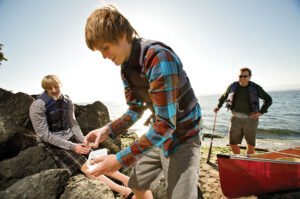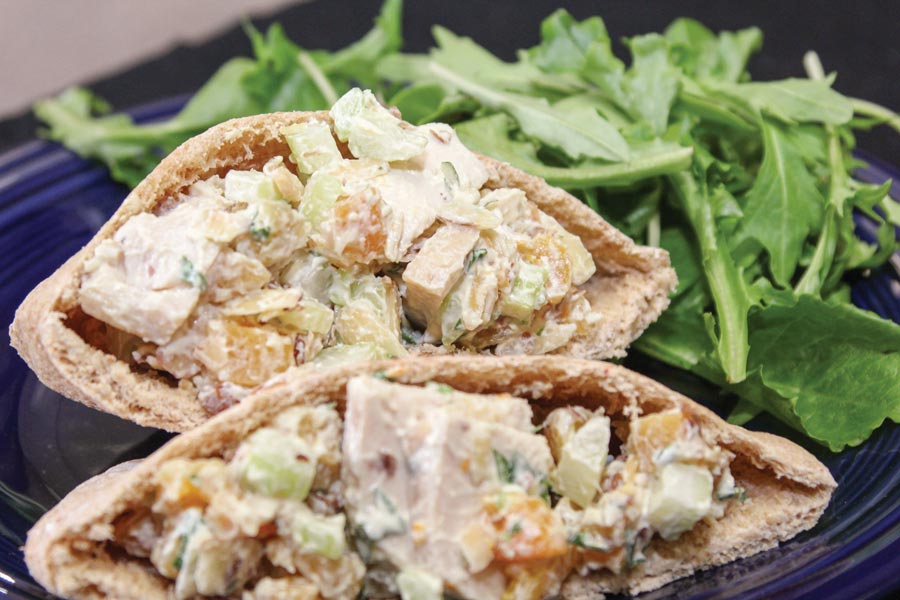By Amy Higgins
 Road trip activities are often tedious and predictable: the license plate game, 10 minute pit stops, mounds of munchies and the occasional snooze. But there are ways to break up the monotony, get a little exercise and have fun.
Road trip activities are often tedious and predictable: the license plate game, 10 minute pit stops, mounds of munchies and the occasional snooze. But there are ways to break up the monotony, get a little exercise and have fun.
Try geocaching and letterboxing. These scavenger hunts aren’t new, but they aren’t as familiar as your traditional traveling games. They have gained worldwide attention and can be played within feet of your home, in the middle of nowhere and abroad. No matter where or how far you travel, it’s practically guaranteed a geocaching or letterboxing treasure is nearby.
On your next road trip, take a little detour and include a few stops to search for hidden treasure.
Geocaching
Geocaching was first reported by The New York Times in October 2000. It has since become a worldwide sensation, says Eric Schudiske, public relations and special media manager for geocaching.com. Geocachers can be found all over the world, several of which are deeply ingrained in the geocaching community. Several groups go so far as to schedule geocaching events and outings.
 Geocaching uses GPS devices to locate the coordinates to a specific treasure, or geocache. Simply register for a free basic membership on geocaching.com, locate the “Hide & Seek a Cache” page, enter the postal code, state or approximate address of your desired location and click on any geocache in the list provided. Lists are sizable and range in difficulty and terrain, so you’ll have many options to choose from.
Geocaching uses GPS devices to locate the coordinates to a specific treasure, or geocache. Simply register for a free basic membership on geocaching.com, locate the “Hide & Seek a Cache” page, enter the postal code, state or approximate address of your desired location and click on any geocache in the list provided. Lists are sizable and range in difficulty and terrain, so you’ll have many options to choose from.
Once you decide which geocache is the most enticing, enter the coordinates in your GPS device and follow the clues. Find out if the geocache’s description offers additional hints, such as a decryption, as these hints can be critical to finding the cache. And remember to pack a pencil and notebook for the road.
Smartphone users can install the free “Geocaching Intro” app, which accomplishes the same goals as the website but its portability comes in handy, especially on road trips when you need to look up a tip or resolve to abort a particular mission and move to a different cache.
Geocaches have hidden compartments and come in many forms: plastic containers, boxes, bags, fake rocks and logs, tools, nuts and bolts, and magnetic containers such as the geocache titled “Cherry Knolls 8: Elvis” in Centennial, Colorado. With a difficulty rating of one star, this particular find is easy enough for an amateur geocacher, but fun to hunt down nonetheless.
When you find the geocache, open it, check out the contents, sign the logbook and take a picture as a reminder of your journey. Some caches contain treasures. If you choose to take one, it is expected that you replace the treasure with another of equal value. When your mission is complete, it’s important to return the cache to its original spot so others can enjoy the treasure hunt in the future.
 As you become more familiar with the game, challenge yourself to the more difficult hunts. Or, relocate or create a geocaching trackable, a traveling game piece. Common types of trackables include Travel Bug® Trackables and Geocoins. These games pieces are etched with a code so users can find details of the trackable on the Geocaching.com
As you become more familiar with the game, challenge yourself to the more difficult hunts. Or, relocate or create a geocaching trackable, a traveling game piece. Common types of trackables include Travel Bug® Trackables and Geocoins. These games pieces are etched with a code so users can find details of the trackable on the Geocaching.com
website. The game piece travels from one cache to another, sometimes all over the world and, recently, one traveled to space.
To learn about space travel, the 5th grade class at Chase Elementary School in Waterbury, Connecticut, gave astronaut Rick Mastracchio a special Travel Bug® that traveled with him to the International Space Station in November 2013. The Travel Bug® is expected to arrive back at the elementary school when he returns in May 2014.
Letterboxing
It is believed that letterboxing began in 1854 in England. In a hard to reach area of the park, James Perrott, a Dartmoor National Park guide, left his contact information in a bottle, inviting those who found the bottle to contact him and to leave their own information for others to find. That was letterboxing in its infancy. The game never went away, but it didn’t gain a lot of popularity in North America until it was resurrected in 1998 when Smithsonian magazine wrote an article about the pastime.
 Today, letterboxing is different. Letterboxing players start by establishing a trail name and stamp design as their identification. Many diehard letterboxing enthusiasts create their own one-of-a-kind signature stamp using wine bottle corks, foam, erasers, rubber or any other ink-absorbent material. Then, with a writing implement, notebook, inkpad, compass and clues in hand, they set out to find letterboxes.
Today, letterboxing is different. Letterboxing players start by establishing a trail name and stamp design as their identification. Many diehard letterboxing enthusiasts create their own one-of-a-kind signature stamp using wine bottle corks, foam, erasers, rubber or any other ink-absorbent material. Then, with a writing implement, notebook, inkpad, compass and clues in hand, they set out to find letterboxes.
Letterbox clues can be found online at letterboxing.org or atlasquest.com. By doing a simple location-based search, players can obtain a list of letterboxes in that area. Choose your desired letterbox, read the clues, print a map of the area, gather your letterboxing supplies and you’re ready for the hunt.
Letterboxes range in size and type. One letterbox could be a Tupperware container while another might be a fake rock, so be observant. Many letterboxes require you to hike for miles and others can be found feet from your home.
When you locate a letterbox, you’ll find a logbook and stamp inside. Imprint the enclosed stamp impression in your personal logbook and write about your experience. Next, stamp the letterbox’s logbook with your personal stamp and record your letterboxing name, hometown and date. Lastly, return the letterbox and its contents to its original location.
The LetterBoxer’s Companion – Exploring Mysteries Hidden in the Great Outdoors by Randy Hall is a popular guide for letterboxing newbies and could come in handy during your letterboxing road trip. In the book, Hall offers tips on following clues, creating your personal stamp and letterboxing etiquette.
Actively Searching
With geocaching and letterboxing you’re not only experiencing a fun adventure and testing your problem-solving skills, you also benefit from the exercise. “There’s a study, for the first time, that tracks the health benefits of geocaching,” Schudiske says. “People who geocache are less likely to be obese or call in to work sick.”
Studying 1,000 participants, researchers of the Geocaching for Exercise and Activity Research (GEAR) project will determine how much physical activity is involved hunting for geocaches. Study participants are using a pedometer to track their movement while geocaching. Results of the study will be available in March or April 2014.
Who doesn’t like a little treasure in their life? Start a tradition and give letterboxing or geocaching a shot on your next road trip. Whichever path you choose, be sure to go back to their websites and share your experience with people who enjoy treasure hunting as much as you.
Amy Higgins, a Centennial, Colorado, writer with Colorado Country Life magazine, enjoys geocaching with her son, Jack, 7.
Photos Courtesy of Geocaching.com








